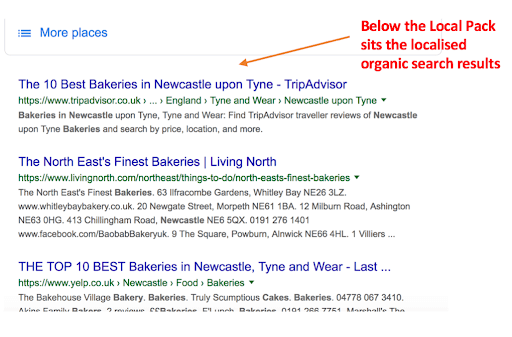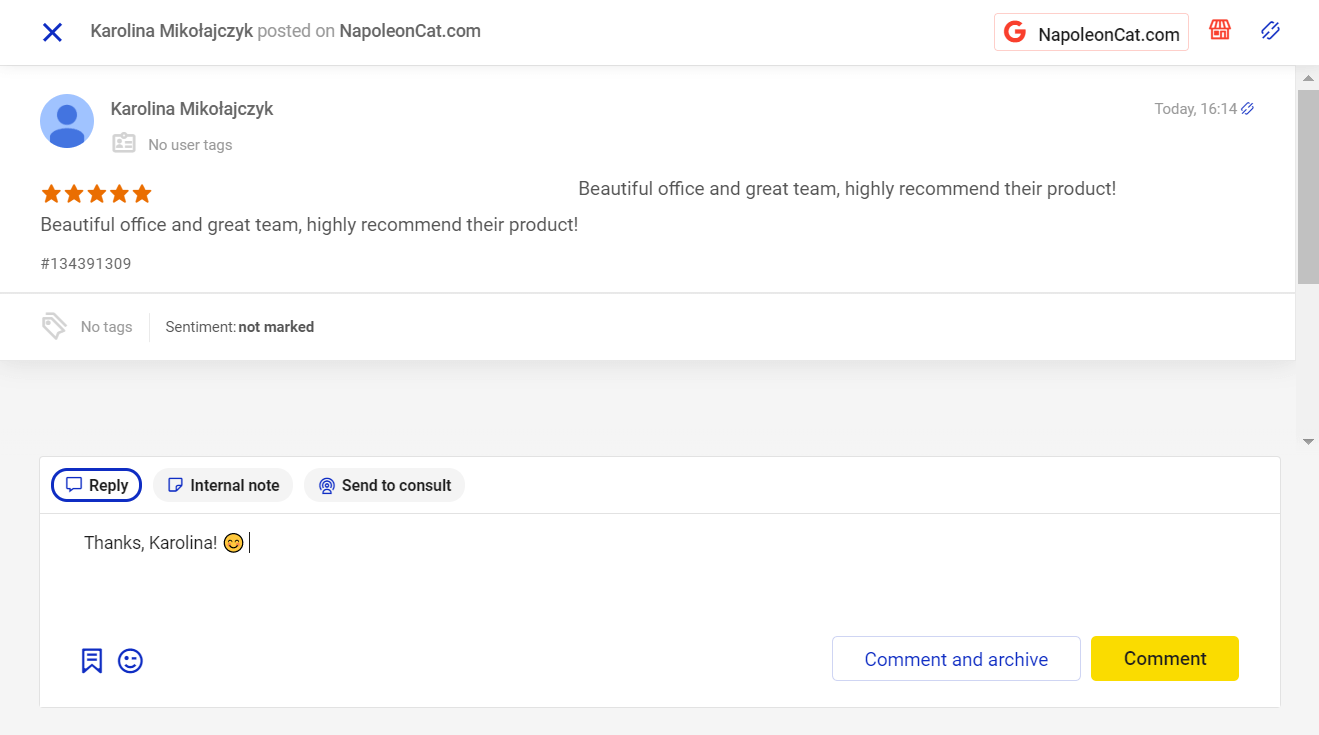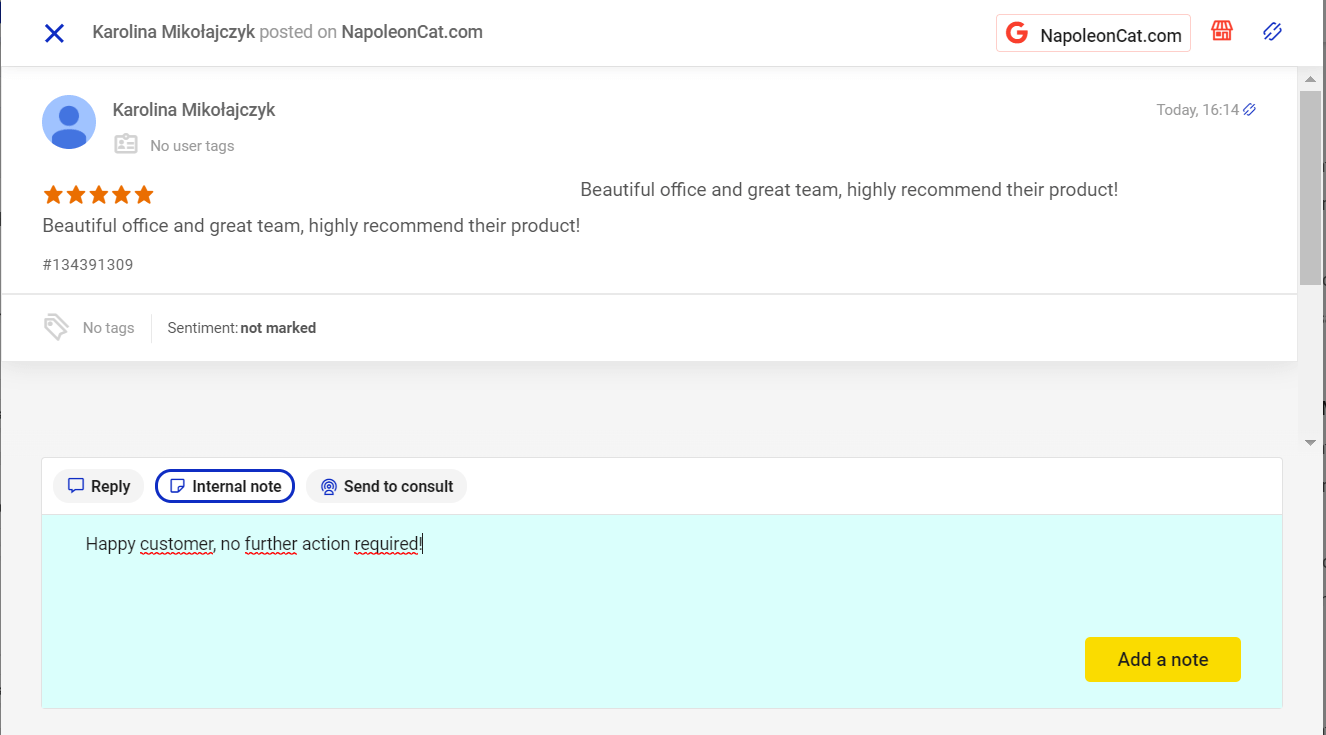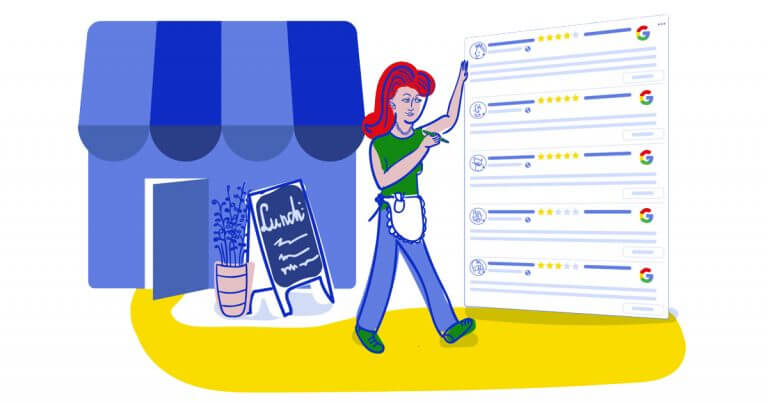There’s no denying Google’s dominance on the global stage. The average person conducts 3-4 Google searches1 every waking day and for 35% it is their go-to resource for finding the products and services they want2.
So, any business with an online presence needs to understand how to make it work for them.
There are over 200 Google ranking factors (or so we think).
Getting a handle on all of them is a challenge even for hardened professionals. Luckily, there’s some low-hanging fruit that anyone can pick to give their SEO a significant boost.
Two of the most important are Google Maps and Google Reviews. Done right, they will increase your visibility by boosting your SEO. In this blog, I’m going to tell you how you can make it work for your business.

How important are they anyway?
Before we get into the how, let’s take a look at some facts:
- 9/10 people check a company’s reviews before committing to a purchase
- 97% of those say reviews impact their buying decisions
- And almost all of them trust reviews as much as recommendations from their family and friends
How about Google Maps?
- 86% of people use it to find the local products and services they need
- 1 in 5 of those make a purchase within 24 hours of checking out a business online
- And 58% use their smartphones to look up companies on Google every single day
What these statistics tell us is that it’s no exaggeration to say that Google Maps and Reviews can make or break a business’s online success.
How much do Reviews and Maps impact local SEO?
When it comes to Google’s localised search results, there are really two features businesses should be aware of, the Local Pack and localised organic search.
The Local Pack
Google’s Local Pack is a list of the top three businesses relevant to a search query, presented under the map at the top of the local search results page.

According to Moz’s research, reviews determine 13% of your business’s chance of ranking in Google’s Local Pack (aka Snack Pack, 3-Pack), and your Google My Business (which places you in Maps) accounts for 19%.
Also, it’s good to know that review stars can boost CTR by as much as 35%.
That might not sound deal-breakingly significant, but it makes them more impactful than your citation (mentions of your business online), behavioural (bounce rate, time-on-page, etc.) and social (social media) signals.
Localised organic ranking
Both Maps and Reviews are also important factors in localised organic ranking, even if the effect is slightly less than for the Local Pack.
Localised organic ranking is the same as non-localised (or generalised, i.e. everything on the internet, local or not) search results.

The quantity, diversity, quality, etc. of your reviews and your My Business signals (including Maps) determine a total of 14% each of your localised ranking. Which, again, means they carry more weight than social signals.
Why does Google care about reviews?
Google uses reviews to rank local businesses because your customers are a more reliable source of information on the reliability of your business than your web page. Reviews are basically a form of online social proof.
Your business’s reviews offer Google a chance to verify whether all of the other online information about your business is actually true. Which means it can avoid sending its users to businesses that are bogus or unreliable.
To build your Google reviews (or show up in localised Google searches at all), you’ll need a Google My Business account. But these are not the only reviews Google cares about. It will scour the internet for reviews on other sites where people search for opinions: Facebook, Yelp, your website and more.

Social media management
Manage unlimited Facebook, Instagram, Twitter and LinkedIn pages in a single inbox. Track competitors and improve performance using simple dashboards.
Try NapoleonCat free for 14 days. No credit card required.
What about maps?
In 2019, Google released an update for localised search rankings that made ‘proximity to searcher’ the top ranking factor (over e.g. star rating) for local search queries. Yet too many businesses still don’t check whether their Maps details are correct.
When you register your company on Google My Business, Google places the pin automatically and bases its choice on data from the internet. If that data is wrong because, for example, your business is inside a large Business Centre with multiple, spread-out units, or your building is particularly new, your pin might not be in the right place.
Not only does this confuse your potential customers, reducing your footfall, but it also drags down your SEO:
- It changes your business’s ‘proximity’ to searchers
- If people report your questionable location to Google, your business will be marked as unreliable
What should you do about it?
Although Google maps and Google Reviews are central to effective search engine optimization, too many businesses choose to brush them aside. Don’t be like them, take control of both!
In the case of maps, the solution is simple – as mentioned before, verifying your address information in your Google My Business account will solve many issues. Handling Google Reviews might take a bit more of your time, but the results make your efforts worthwhile.
Responding to reviews builds credibility, with customers and with Google itself. Answering reviews gives you a chance to show your customers that you value their feedback. In the case of negative reviews, a friendly, considerate answer also has the power to change the unhappy customer’s sentiment.
Brands that actively engage with reviews are also seen as more credible by the search engine. Google’s goal is to provide users with valuable suggestions by prioritizing trustworthy businesses in search results. Finally, you can improve your SEO by carefully crafting your responses. Being polite and informative is key but you can also use your answers to feature industry-specific keywords and common search phrases.
How do you manage Google Reviews?
Use a social media management tool like NapoleonCat to easily answer and categorize Google Reviews. NapoleonCat’s Social Inbox dashboard combines comments, posts, private messages, and reviews from all of your social media pages (on Facebook, Twitter, Instagram, LinkedIn, and Google) in one place. Here’s how you can improve your Google Reviews response process using the feature.
Use the Social Inbox to answer Google Reviews in real time. You can use the built-in emoji keyboard to add a personal touch to your message. The “Send to consult” feature simplifies teamwork and allows you to put an approval process in place.

Assign sentiment to every comment to observe changes in your audience’s attitude towards your business over time.

Finally, leave notes and assign team members if further action is required.

UK Web Host Review constantly monitors and evaluates each hosting company and provides relevant up-time statistics to give you a clear and concise overview.
1: 63 Fascinating Google Search Statistics
2: 27 Google Search Statistics You Should Know in 2019





